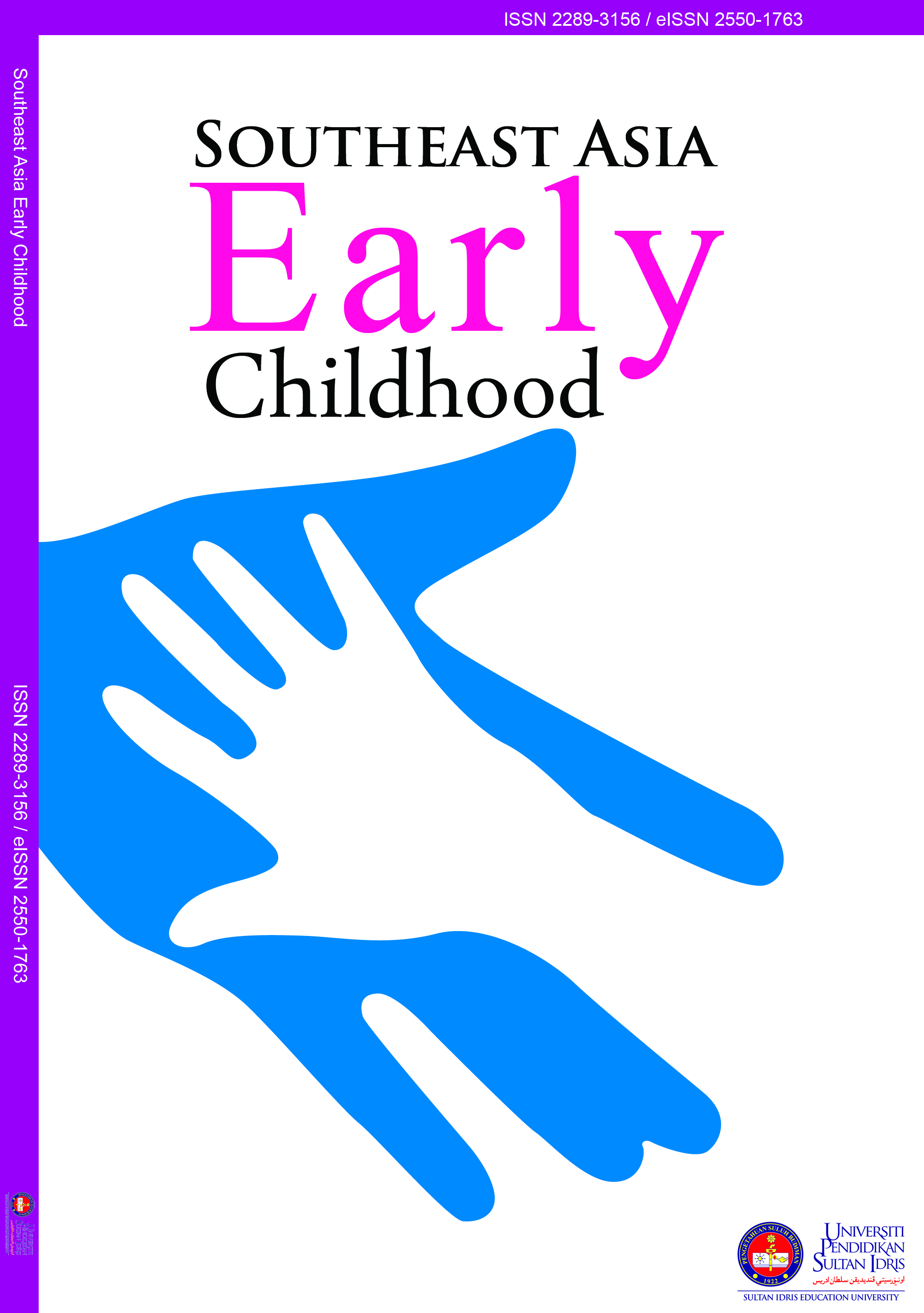Cultural sensitivity scale for early childhood educators: Development and validation
DOI:
https://doi.org/10.37134/saecj.vol12.1.9.2023Keywords:
cultural sensitivity, early childhood educators, cultural sensitivity scaleAbstract
This study aimed to create and validate a scale for early childhood educators that reflects the cultural sensitivity of educators in classrooms. We collected data from 403 early childhood educators in Adıyaman, Turkey. Experts' assessments were consulted for content validity, and EFA and CFA were done for the reliability and validity of the scale. The internal consistency coefficient was calculated based on the reliability of the study. The result of scale development was a 29-item, 3-factor scale that shows evidence of reliability, validity, and practical usability for further research. The three factors of the Cultural Sensitivity Scale for Early Childhood Educators consist of "acceptance of cultural differences," "adaptation of cultural differences," and "rejecting cultural differences." The relationship among subscales was tested and it was seen that the sub-dimensions of 'Acceptance of Cultural Differences' and 'Adaptation to Cultural Differences' were positively related to each other and that these two sub-dimensions were negatively and significantly related to the sub-dimension of 'Rejecting Cultural Differences'. Confirmatory factor analysis (CFA) also confirmed the results of EFA. Factor analysis results show ed that the scale had three factor and Cronbach a was .743.
Downloads
References
Aydın, B. & Şahin, M. (2017). Psikolojik danışman adaylarında kültürel duyarlılığı yordayan bazı değişkenler Some varibles predicting the cultural sensitivity in counselor candidates. Buca Eğitim Fakültesi Dergisi, 43, 64-77. https://dergipark.org.tr/en/pub/deubefd/issue/35767/399873
Barron, P., & Dasli, M. (2010). Towards an understanding of integration amongst hospitality and tourism students using Bennett’s developmental model of intercultural sensitivity. Journal of Hospitality, Leisure, Sport and Tourism Education, 9(2), 77-88. https://doi.org/10.3794/johlste.92.311
Bennett, J. M., & Bennett, M. J. (2004). Developing intercultural sensitivity: An integrative approach to global and domestic diversity. Sage.
Berg, S. (2001), "A study of sample withdrawal for lubricated systems. Part 2: practical sample withdrawal and selection of proper sampling methods". Industrial Lubrication and Tribology, 53(3), 97-108. https://doi.org/10.1108/00368790110390184
Büyüköztürk, Ş. (2008). Veri analizi el kitabı, istatistik, araştırma deseni SPSS uygulamaları ve yorum Manual of data analysis, statistics, research pattern SPSS applications and interpretation . Pegem.
Büyüköztürk, Ş. (2011). Sosyal bilimler için veri analizi el kitabı Manual of data analysis for social sciences. Pegem.
Byrne, B. M. (2001). Structural equation modeling with AMOS: Basic concepts, applications, and programming. Erlbaum.
Chen G. M, & Starosta W. J. (2000). The development and validation of The Intercultural Sensitivity Scale. Commun Stud, 3,1-15. https://files.eric.ed.gov/fulltext/ED447525.pdf
Denson, N., Ovenden, G., Wright, L., Paradies, Y., & Priest, N. (2017). The development and validation of intercultural understanding (ICU) instruments for teachers and students in primary and secondary schools. Intercultural Education, 28(3), 231-249. https://doi.org/10.1080/14675986.2017.1333346
Field, A. (2005). Discovering statistics using SPSS for Windows. Sage.
Fraenkel, J. R., Wallen, N. E., & Hyun, H. H. (2012). How to design and evaluate research in education. McGraw-hill.
Gabriel, E., Hunt, C., & Matthews, L. (2011). Culturally relevant approaches to classroom management. TEACH Journal of Christian Education, 4(1), 10-13. https://research.avondale.edu.au/teach/ vol4/iss1/5.
Garcia, K. A., & Pantao, J. G. (2021). Cultural sensitivity and classroom management of teachers. International Journal of Professional Development, Learners and Learning, 3(1), ep2108. https://doi.org/10.30935/ijpdll/11093
Haberman, M., & Post, L. (1990). Cooperating teachers' perceptions of the goals of multicultural education. Action in Teacher Education, 12(3), 31-35. https://doi.org/10.1080/01626620.1990.10734397
Hammer, M. R., Bennett, M. J., & Wiseman, R. (2003). Measuring intercultural sensitivity: The intercultural development inventory. International journal of intercultural relations, 27(4), 421-443. https://doi.org/10.1016/S0147-1767(03)00032-4
Hernandez, F., & Kose, B. W. (2012). The developmental model of intercultural sensitivity: A tool for understanding principals’ cultural competence. Education and Urban Society, 44(4), 512-530. https://doi.org/10.1177/0013124510393336
Hu, L. T., & Bentler, P. M. (1999). Cutoff criteria for fit indexes in covariance structure analysis: Conventional criteria versus new alternatives. Structural Equation Modeling: A Multidisciplinary Journal, 6(1), 1-55. https://doi.org/10.1080/10705519909540118
Karataş, K., & Oral, B. (2019). Evaluating elementary teaching undergraduate programs in terms of culturally responsive elementary teacher training. Inquiry in Education, 11(2), 6. https://digitalcommons.nl.edu/ie/vol11/iss2/6
Kelloway, E. K. (1998). Assessing model fit. In E. K. Kelloway (Ed.), Using LISREL for structural equation modeling: A researcher’s guide (Ch. 4). Sage.
Kline, R.B. (2010). Principles and practice of structural equation modeling. The Guilford Press.
Kotluk, N. (2018). Kültürel değerlere duyarlı eğitime ilişkin öğretmenlerin öz-yeterlik algılarının ve görüşlerinin incelenmesi Examining teachers' views and self-efficacy perceptions about culturally relevant/responsive education. (Yayınlanmamış Doktora Tezi). Yüzüncü Yıl Üniversitesi, Van.
Larke, P. J. (1990). Cultural diversity awareness inventory: Assessing the sensitivity of preservice teachers. Action in Teacher Education, 12(3), 23-30. https://doi.org/10.1080/01626620.1990.10734396
Lee Olson, C., & Kroeger, K. R. (2001). Global competency and intercultural sensitivity. Journal of Studies in International Education, 5(2), 116-137. https://doi.org/10.1177/102831530152003
Muijs, D. (2004). Doing quantitative research in education with SPSS. Sage.
Tabachnick, B. G., & Fidell, L. S. (2001). Using multivariate statistics (4th ed.). Allyn and Bacon.
Thompson, B. (2004). Exploratory and confirmatory factor analysis: Understanding concepts and applications. Applied Psychological Measurement,31(3), 245-248. https://doi.org/10.1177/0146621606290168
Vieira, A. L. (2011). Interactive LISREL in practice: Getting started with a SIMPLIS approach. Springer.
Downloads
Published
Issue
Section
License
Copyright (c) 2023 Ayşe Duran Yılmaz, Esra Ömeroğlu

This work is licensed under a Creative Commons Attribution-NonCommercial-ShareAlike 4.0 International License.





